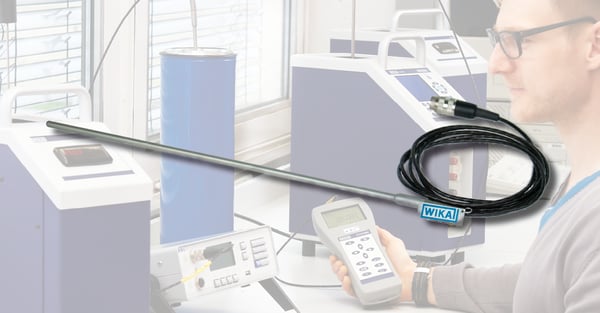Resistance temperature devices or detectors (RTDs) are some of the most common sensors in the world, with applications spanning across all industries. Their uninterrupted use is imperative to keep business moving forward in efficiency and safety. A 4-wire RTD can be calibrated on site with the method of comparison using a multifunction calibrator, reference probe and temperature bath or dry block.

An RTD is a precision temperature sensing device that provides accurate, stable readings over a long span of time. They use metal wire, such as platinum, which changes its electrical resistance as a function of temperature. RTDs are commonly used in many industries and for many applications, including:
- Food industry
- Monitor temperature/time cycles to ensure high food quality
- Automotive industry
- Combustion and exhaust temperature
- Solar energy conversion
- Accurate temperature measurement to achieve optimal heat flow
- Energy efficiency in the home and industry
- Measurement of temperature
- Hospital infant incubator
- Temperature must be kept in the proper range
These industries depend on uninterrupted use of their sensors in order to maintain production efficiency and safety. This often makes it impractical to send temperature sensors off to a lab for periodic recalibration. Within a matter of minutes, an on-site calibration can be performed using the following equipment:
- Multifunction calibrator
- Reference probe
- Temperature bath or dry block
A 4-wire RTD can be calibrated with the method of comparison, connecting it to the input (IN A) as a DUT (device under test) and comparing it with a reference RTD connected to the other input (IN B) as REF (reference).
This way, the two measurements can be compared. The calculated error is then reported on the calibration report.
Both the reference probe and the DUT have to be put in the equalized area of the temperature bath or in the dry block, preferably at the same depth. The measurement should be taken from full scale range going downscale. The output of both RTDs will be measured using the input channels of the multifunction calibrator, such as WIKA’s Pascal 100.
By using the calibration routine of the Pascal 100, the user will be able to automatically verify the error of the DUT and to export the results in a calibration certificate. With this method of calibration, equipment downtime is minimized while maintaining stability and accuracy standards for your equipment.
Related Reading:


